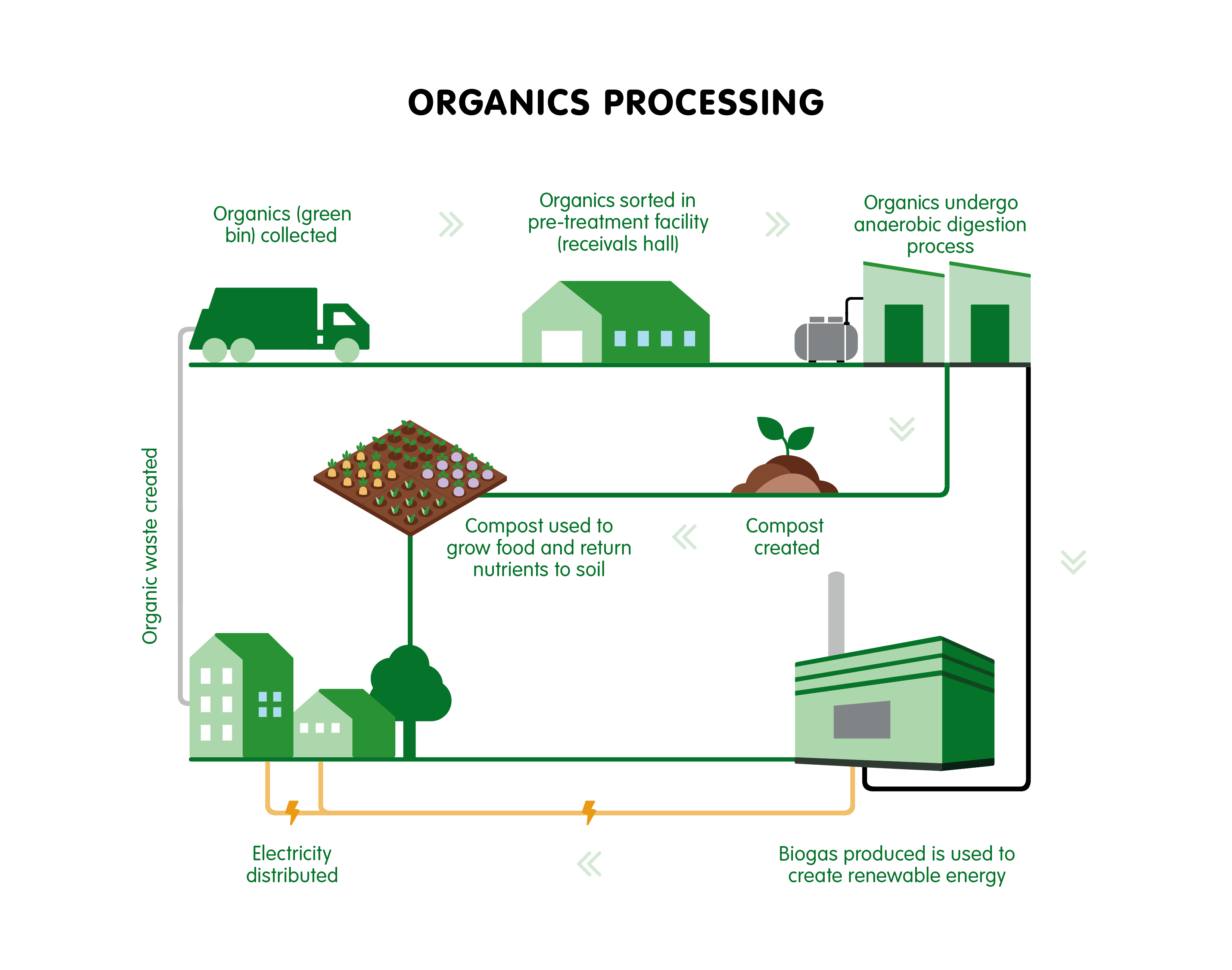Anaerobic Digestion Solutions
Anaerobic digestion (AD) has a key role to play in our journey to a more sustainable future. AD is a way to turn organic waste into higher value products, such as renewable energy and compost. This is a circular economy process, allowing resources to be recovered and reused instead of being wasted.
AD is the controlled decomposition of organic waste to produce biogas, a methane rich, renewable fuel which is used to create bioenergy. This process also produces digestate, a nutrient-rich, organic by-product that can be used to create compost. Producing energy and soil nutrients provides the optimal solution for organic waste in a circular economy.
LMS Energy (LMS) has spent more than 20 years developing its AD technology to ensure that Australia’s municipal organics are processed and used most effectively.
Through in-depth research, LMS identified batch dry digestion technology as the best choice for Australian municipal organic waste. Along with producing renewable energy, dry AD preserves the organic material needed for local soils.
LMS’ AD technology is energy positive (producing more energy than it uses) meaning less carbon emissions compared to other organics processing methods.
The renewable energy (biogas) can be used to power on-site infrastructure or supplied to the local electricity grid via existing LMS infrastructure.
